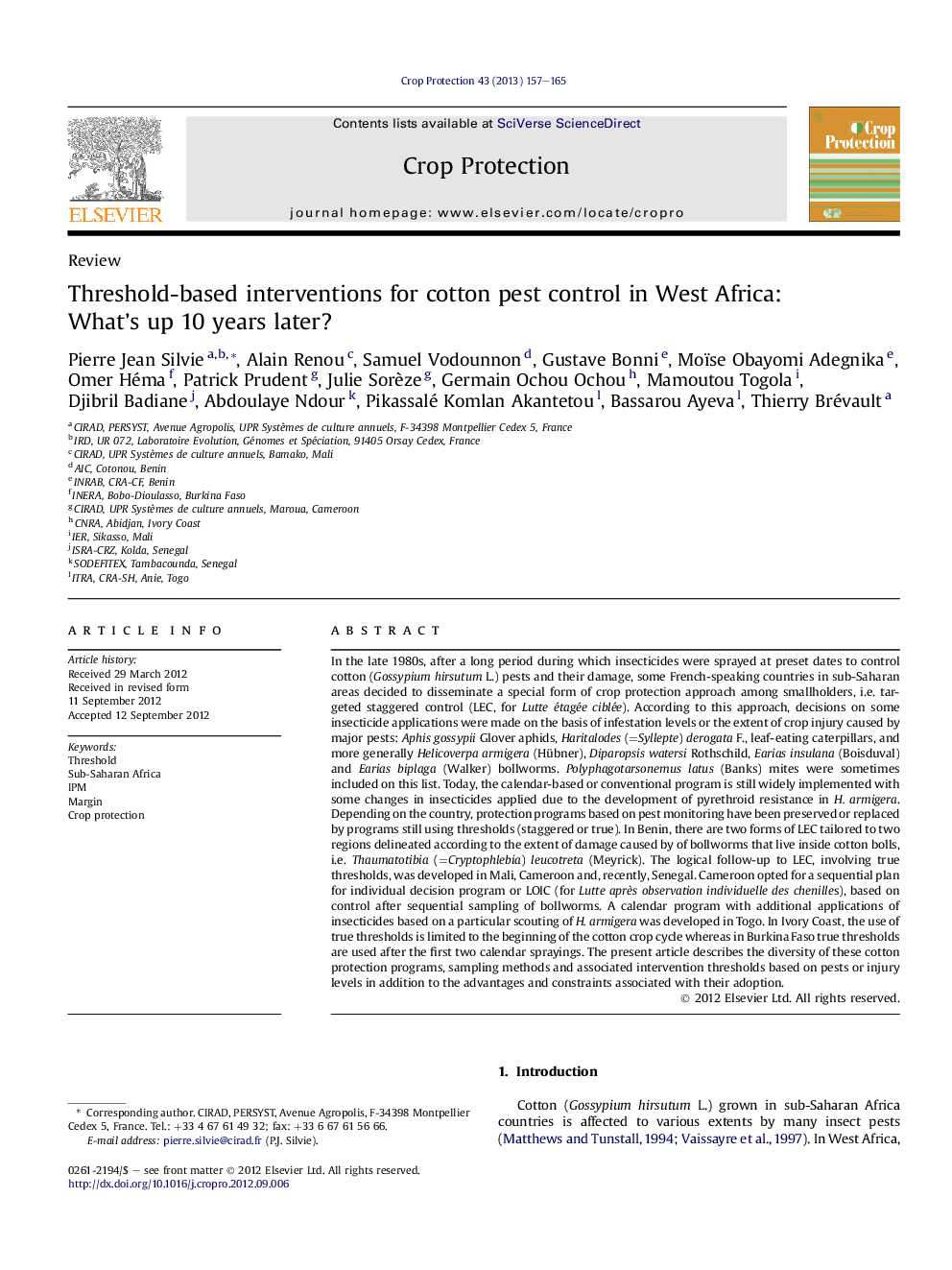| کد مقاله | کد نشریه | سال انتشار | مقاله انگلیسی | نسخه تمام متن |
|---|---|---|---|---|
| 4506114 | 1624344 | 2013 | 9 صفحه PDF | دانلود رایگان |

In the late 1980s, after a long period during which insecticides were sprayed at preset dates to control cotton (Gossypium hirsutum L.) pests and their damage, some French-speaking countries in sub-Saharan areas decided to disseminate a special form of crop protection approach among smallholders, i.e. targeted staggered control (LEC, for Lutte étagée ciblée). According to this approach, decisions on some insecticide applications were made on the basis of infestation levels or the extent of crop injury caused by major pests: Aphis gossypii Glover aphids, Haritalodes (=Syllepte) derogata F., leaf-eating caterpillars, and more generally Helicoverpa armigera (Hübner), Diparopsis watersi Rothschild, Earias insulana (Boisduval) and Earias biplaga (Walker) bollworms. Polyphagotarsonemus latus (Banks) mites were sometimes included on this list. Today, the calendar-based or conventional program is still widely implemented with some changes in insecticides applied due to the development of pyrethroid resistance in H. armigera. Depending on the country, protection programs based on pest monitoring have been preserved or replaced by programs still using thresholds (staggered or true). In Benin, there are two forms of LEC tailored to two regions delineated according to the extent of damage caused by of bollworms that live inside cotton bolls, i.e. Thaumatotibia (=Cryptophlebia) leucotreta (Meyrick). The logical follow-up to LEC, involving true thresholds, was developed in Mali, Cameroon and, recently, Senegal. Cameroon opted for a sequential plan for individual decision program or LOIC (for Lutte après observation individuelle des chenilles), based on control after sequential sampling of bollworms. A calendar program with additional applications of insecticides based on a particular scouting of H. armigera was developed in Togo. In Ivory Coast, the use of true thresholds is limited to the beginning of the cotton crop cycle whereas in Burkina Faso true thresholds are used after the first two calendar sprayings. The present article describes the diversity of these cotton protection programs, sampling methods and associated intervention thresholds based on pests or injury levels in addition to the advantages and constraints associated with their adoption.
► Thresholds are still used in French-speaking African countries for cotton protection.
► Patterns of threshold-based programs and dissemination vary between countries.
► Threshold-based interventions can reduce insecticide use and increase the margin.
► Improving farmers' knowledge on pests and threshold-based sprays is still required.
► Theoretical versus empirical thresholds that are easy to disseminate should be defined.
Journal: Crop Protection - Volume 43, January 2013, Pages 157–165